Things You Should Know About Milan
 Although I’ll regularly tell people that Milan isn’t worth a stop on a busy trip through Italy – especially if you’re not hell-bent on designer shopping or opera viewing – I do think it’s a very cool city. I think it’s Italy most fast-paced city (it’s often described as the Italian Manhattan), and it does offer the visitor a chance to see a real-life Italian city that doesn’t look like it’s a set straight out of a Hollywood movie.
Although I’ll regularly tell people that Milan isn’t worth a stop on a busy trip through Italy – especially if you’re not hell-bent on designer shopping or opera viewing – I do think it’s a very cool city. I think it’s Italy most fast-paced city (it’s often described as the Italian Manhattan), and it does offer the visitor a chance to see a real-life Italian city that doesn’t look like it’s a set straight out of a Hollywood movie.
Because let’s be realistic – not everything looks like Tuscany.
Even if you weren’t planning to spend any time in Milan on your trip, you might consider adding a day in the city onto one end or the other of your visit if you’re flying in or out of Milan’s Malpensa Airport. It’s the country’s second-busiest airport, but sometimes there are better deals on cheap flights to Milan than there are on flights to Rome.
So if you’re planning even a short visit to Milan, here are some things you should know about Milan before you go.
Milan is a Very Compact City
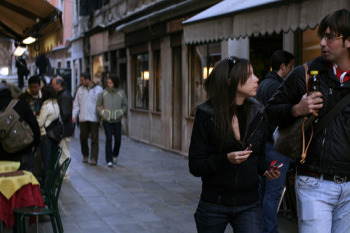 Whereas Rome is enormous not only in terms of population but also in terms of the sprawl of the city, Milan is not. Sure, there are outskirts of the city and suburbs that, if taken as a whole metropolitan area, would make Milan enormous, too. But the Milan that the vast majority of visitors will need to think about – the city center of Milan – is incredibly compact.
Whereas Rome is enormous not only in terms of population but also in terms of the sprawl of the city, Milan is not. Sure, there are outskirts of the city and suburbs that, if taken as a whole metropolitan area, would make Milan enormous, too. But the Milan that the vast majority of visitors will need to think about – the city center of Milan – is incredibly compact.
The true “city center” of Milan, where almost all the tourist sights are, isn’t even quite 2 miles from end to end. Rome, on the other hand, has big-deal sights in so many places that the area most people will cover is more like 4 miles across at its widest point. And I’m not sure what the “Area” measurement on Wikipedia is actually tracking – whether it’s a city itself or the entire metro area around it – but even if you’re just comparing one city to another on Wikipedia you can see right away how small Milan is. Rome’s area is listed as more than 496 square miles – whereas Milan is only 71 square miles.
Now, in both Milan and Rome you’d be well-advised to use public transportation – but whereas getting familiar with Rome’s bus system is a must for a visit there, in Milan you don’t have to master the intricacies of public transport. Between your own two feet and the Milan Metro, you’re good to go. Literally.
So while you don’t need to splurge on a Milan hotel near the Duomo, you do want to make sure that if you’re staying in Milan (especially for a short visit) you’re in the true city center so you have easy access to all the sights.
Milan’s Biggest Sights Can be Seen in a Day
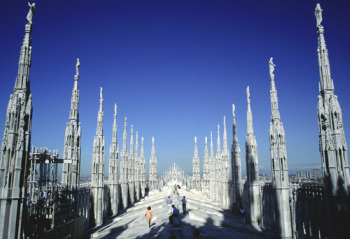 This is an extension of the first point, but it’s worth repeating since it does take a little bit of savvy planning in order to accomplish the “see everything in a day” agenda. But we’ll get to the challenging bits in the next point.
This is an extension of the first point, but it’s worth repeating since it does take a little bit of savvy planning in order to accomplish the “see everything in a day” agenda. But we’ll get to the challenging bits in the next point.
With one full day in Milan, perhaps the day before you fly out of Malpensa Airport, you’ll need to get an early start. If you’re staying at one of the Malpensa Airport hotels, you’ll need to get a really early start – because Malpensa is 45-50 minutes by train or bus away from the city center. (This is why I suggest staying in the city center if yours is a really short visit.)
A visit to the Duomo (the 8th largest in the world by area, dontcha know) is a great place to begin your day (after a coffee and pastry at a corner bar, of course). It’s not the most spectacular cathedral interior art-wise, but it’s huge and it’s free to visit. Next, take the elevator (or climb the stairs if you’ve skipped your morning run!) to the top of the Duomo and walk around on its roof. If it’s raining out this activity is probably worth skipping, but on a nice day – when the pollution levels are low – you can see the mountains in the distance.
Some of the city’s other famous sights – the Museum at La Scala opera house, the Pinacoteca Brera art museum, and the San Siro soccer stadium – may not be to your liking. If they are, two of them are within a stone’s throw from the Duomo (San Siro is outside the city center and would require a bus or tram ride) and neither is particuarly large. Window shopping on the famous designer street is a worthwhile stop, but unless you’re doing any actual shopping it’s a quick one.
Most of the other things I’ve included on my list of the top 10 things to do in Milan either take up only a few minutes or are easy to do on your way from one thing to another. The exception to this is the challenging part of a one-day visit to Milan, which brings me to…
Leonardo’s Famous “Last Supper” is in Milan
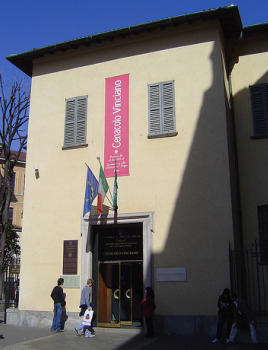 Since Milan is most often seen as primarily a business and banking city, it’s easy to forget that there’s culture here, too. In fact, one of the most famous tourist sights in Milan is Leonardo da Vinci’s painting, “The Last Supper,” which adorns one entire wall of a former rectory (dining hall) in the Santa Maria delle Grazie church. It’s one of those things most people want to see when they’re in Milan, which is understandable. But whether you’re only visiting Milan for a day or you’ve got several days here, you might still find it hard to get in to see “The Last Supper.”
Since Milan is most often seen as primarily a business and banking city, it’s easy to forget that there’s culture here, too. In fact, one of the most famous tourist sights in Milan is Leonardo da Vinci’s painting, “The Last Supper,” which adorns one entire wall of a former rectory (dining hall) in the Santa Maria delle Grazie church. It’s one of those things most people want to see when they’re in Milan, which is understandable. But whether you’re only visiting Milan for a day or you’ve got several days here, you might still find it hard to get in to see “The Last Supper.”
The most challenging aspect of planning a trip to Milan (especially a short one) is, without question, getting in to see Leonardo’s “Last Supper.” It’s only a 15-minute visit, so it’s not that it’ll take up your whole day – it’s that tickets sell out so far in advance.
Depending on the season, you’ll want to start looking at booking your tickets to “The Last Supper” online as many as 4-5 months in advance of your visit. Even during the low season, ticket availability can be scarce – on my first trip, a 10-day visit in November, tickets were already sold out through January. I made sure to plan further ahead on my next visit (6 weeks in February and March) and still only found two tickets available two days before I was to fly out.
If seeing da Vinci’s “The Last Supper” (which is “Cenacolo Vinciano” in Italian) is one of those things where you can’t leave Milan without checking it off your bucket list, then be absolutely sure you’ve booked your tickets in advance on the website. And please, respect the fragility of the painting – there’s no photography or video allowed.
Milan is Expensive
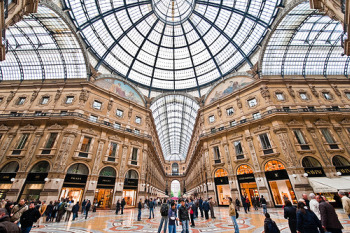 As you no doubt will have guessed as soon as you read the words “Milan is Italy’s banking and fashion capital” in every guidebook, Milan is an expensive city – both to live in and to visit. The Milanese are famous for spending lavishly on their designer wardrobes every year, and I feel out of place just walking down the super-posh Via Montenapoleone (where all the top designers have their shops) let alone going into those stores. The neighborhoods that hug Duomo Square have some of the highest rent apartments in the city, and any hotel that overlooks the famous church has a room rate to match its spectacular view.
As you no doubt will have guessed as soon as you read the words “Milan is Italy’s banking and fashion capital” in every guidebook, Milan is an expensive city – both to live in and to visit. The Milanese are famous for spending lavishly on their designer wardrobes every year, and I feel out of place just walking down the super-posh Via Montenapoleone (where all the top designers have their shops) let alone going into those stores. The neighborhoods that hug Duomo Square have some of the highest rent apartments in the city, and any hotel that overlooks the famous church has a room rate to match its spectacular view.
If you’re thinking of spending several days in this city, then you’ll want to be more careful about your budget – finding a cheap hotel in Milan in a less fancy neighborhood, learning where the locals go to eat cheaply, and walking whenever possible. But for a shorter visit, especially if you only have one full day in the city, you might want to plan to spend a bit more to make your stay more convenient – namely on your hotel’s location.
As mentioned above, staying in the true city center will give you easy access to everything you’ll want to see and do in Milan without having to negotiate more than the three Metro lines. If you think you’ll be using the Metro often (or using buses or trams in Milan as well as the Metro), then consider picking up a 10-ride “carnet,” which is cheaper than paying for 10 individual rides. Enjoying the free buffet at a bar during aperitivo is an excellent way to stretch your food budget, and while shopping in the flagship designer stores may not be on the agenda don’t overlook the deals that can be had if you’re willing to hunt down Milan’s discount fashion outlets.
Milan on a budget doesn’t sound like it would be easy, and it’s harder than in some other Italian cities, but it can be done.
There are Canals in Milan
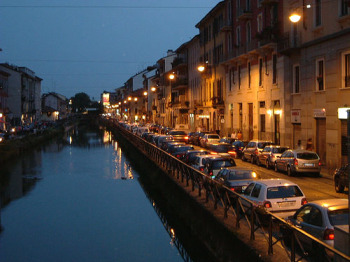 We all associate Venice with canals, but did you know that Milan has canals, too? They aren’t as extensive as the ones in Venice, and they’re not used as a means of transportation, but it’s an oddity in the city that’s fun to check out in person.
We all associate Venice with canals, but did you know that Milan has canals, too? They aren’t as extensive as the ones in Venice, and they’re not used as a means of transportation, but it’s an oddity in the city that’s fun to check out in person.
While Milan once had several canals, there are only two left that haven’t been covered, and they’re both in what’s known as the “Navigli” (an Italian word for ships or canals) part of Milan. The larger canal, Naviglio Grande, was Europe’s first artificial canal and once served an important role in shipping goods in and out of Milan. The smaller canal, Naviglio Pavese, is based on a design by Leonardo da Vinci and once stretched more than 30km from Milan to Pavia.
Today, both canals are in a state of semi-disrepair, and if you visit in the off-season you may even have the “pleasure” of seeing the ugliness of a drained canal. In the summer, however, there are small tour boats that run up and down the Naviglio Grande. There’s also a movement afoot in Europe to resurrect many of the artificial canals that once tied cities together, with the goal of one day connecting Switzerland to Venice via inland waterways only.
Although the novelty of canals in Milan is an understandable draw – not to mention the fact that the Navigli neighborhood is one of Milan’s up-and-coming districts, making the transition from low-rent apartments and lots of artists to more expensive housing – keep in mind that Milan is already full of mosquitoes in the humid summertime. If you’re staying near those canals that have no natural inlet or outlet (so the water doesn’t move), you run the risk of having even more buggy night-time visitors.
Life in Milan Moves Faster than Elsewhere in Italy
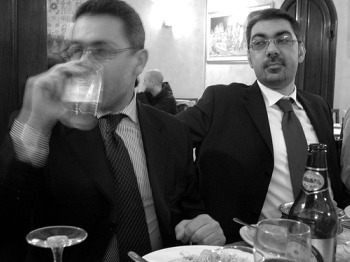 It’s probably not surprising when you think about Milan being the country’s banking capital, but life in Milan just seems to move along at a quicker pace than in other Italian cities. Yes, the Milanese still linger over lunches that are way longer than the ones you probably have back home, and they aren’t rushing through pre-dinner drinks or dinner, either. But there’s far less of that aimless “strolling” we all associate with the evening passeggiata here than in other cities.
It’s probably not surprising when you think about Milan being the country’s banking capital, but life in Milan just seems to move along at a quicker pace than in other Italian cities. Yes, the Milanese still linger over lunches that are way longer than the ones you probably have back home, and they aren’t rushing through pre-dinner drinks or dinner, either. But there’s far less of that aimless “strolling” we all associate with the evening passeggiata here than in other cities.
To some extent, this is because of the city’s focus on business – and international business to be precise – which has no doubt led the locals to move a little more quickly in an effort to adapt and keep up with the speed of business. It could also be that since the city is so compact and (it has to be said) polluted, the Milanese get out of the city when they want to slow down – taking day-trips from Milan to the lakes or to nearby quieter cities like Bergamo or Vigevano.
But no matter what the reason is behind the quicker pace, this isn’t the city you want to visit if you’re looking for the most laid-back Italian vacation imaginable.
The Milanese Know Cocktails
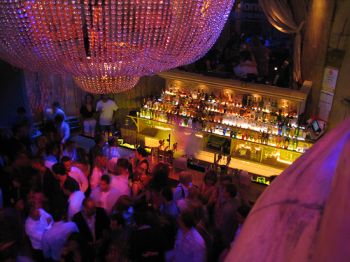 When the husband and I got a wild hair on one trip to Milan, after having spent quite a bit of time in the city, we decided to take a chance on a restaurant claiming to serve “authentic Mexican food” around the corner from the apartment in which we were staying. To make a long story short, it wasn’t that it was bad, but it certainly wasn’t Mexican food. The one standout was the margarita I had – but when I mentioned that to an expat friend living in Milan, she reminded me, “Of course the margarita was good. It’s still Milan.”
When the husband and I got a wild hair on one trip to Milan, after having spent quite a bit of time in the city, we decided to take a chance on a restaurant claiming to serve “authentic Mexican food” around the corner from the apartment in which we were staying. To make a long story short, it wasn’t that it was bad, but it certainly wasn’t Mexican food. The one standout was the margarita I had – but when I mentioned that to an expat friend living in Milan, she reminded me, “Of course the margarita was good. It’s still Milan.”
The Milanese know from fashion, a quick glance around you just about anywhere in the city will confirm that – but they also know from cocktails. Luckily, cocktails in Italy have the same names they do in English, just with an Italian accent – a mojito is a moh|EE|toh and a gin & tonic is a jeen TOH|neek, for instance – and they’re just as popular in Milan as a glass of Italian red wine would be.
As I mentioned above, one of the ways to make your food budget in Milan go further is to take advantage of the many bars serving aperitivo. It’s a little like Happy Hour (and may even be called that in some places), but the idea is you pay for your drink (full price) and can then partake of the all-you-can-eat buffet. Some areas seem to be one aperitivo bar after another (Corso Sempione, to name one), so take a peek at what’s on offer food-wise before you claim a table and start ordering drinks – you don’t want to get stuck with the one bar on the block that only serves potato chips.
As an aside, don’t be surprised if you find the aperitivo bars busy and bustling long into the evening, even on weeknights. People in Milan burn the candle at both ends, and they enjoy their long evenings over drinks with friends – even if they’re getting up the next morning to go into work.
Milan is Polluted, but Also Has Lovely Parks
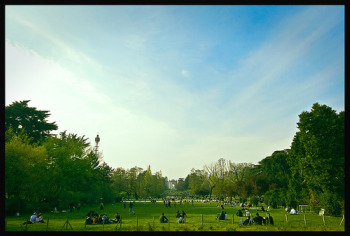 Milan has been listed as having the most smog pollution of any European city, and I know at least one person who left Milan because she was constantly getting bronchitis and other respiratory illnesses. I had no idea the mountains were visible from the Duomo’s roof until the second time I went up there – although it was a “beautiful day,” the brown haze on the horizon obscured anything akin to a view.
Milan has been listed as having the most smog pollution of any European city, and I know at least one person who left Milan because she was constantly getting bronchitis and other respiratory illnesses. I had no idea the mountains were visible from the Duomo’s roof until the second time I went up there – although it was a “beautiful day,” the brown haze on the horizon obscured anything akin to a view.
Those of you planning a short visit to Milan probably won’t notice the pollution (unless you’re driving – which I don’t recommend – because there’s now a “congestion charge” for cars in the city), but you’ll certainly notice the cars. Which is why the city’s green spaces may be even more of a welcome respite than you might think you’d need on a short trip.
The easiest Milan parks to access if you’re sticking to the city center are the Giardini Pubblici (between the Duomo and the Central Train Station) and the Parco Sempione (behind the Castello Sforzesco). Neither is so large that you’ll get away from traffic noise entirely, but in good weather walking through a park in Milan is a nice break from concrete and – especially if it’s a weekend – a chance to see the Milanese at play.
photos, top to bottom, by: Blogfromitaly, Stationary Hobo, globevisions, scalleja, realSMILEY, masaki21bg7, vanz, BruceTurner, lastquest